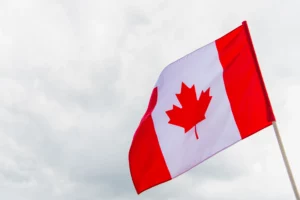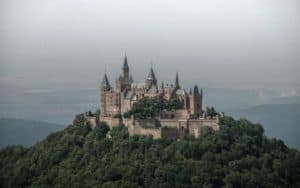Druidic Rituals in Modern Ireland: Tradition Meets Today

Updated On: March 13, 2024 by Fatma Mohamed
Druids have long fascinated those with an interest in the mystical and historical aspects of Ireland’s deep heritage. In modern Ireland, the age-old druidic traditions continue to be practised, reflecting a reverence for nature and an affinity for the ancient rituals that have been carried through the centuries. These modern druidic practices offer a connection to the past, deeply embedded in Irish culture and the lush landscapes that have been the backdrop of Ireland’s story.
Table of Contents

The druidic rituals that are observed today are a blend of historical knowledge and contemporary spirituality designed to foster a harmonic relationship with the land. Gatherings during solstices, equinoxes, and other significant times of the year are common, allowing participants to align with nature’s cycles. Rituals are conducted with respect to the environment and often involve symbolism and elements that hark back to the druidic cosmology. Our understanding of these practices is enhanced by the preservation of Celtic mythology and the ongoing importance placed on environmental values within these communities.
Historical Background of Druidry

In addressing the historical underpinnings of Druidry, we examine the profound legacy and the marked shifts these figures have experienced through the ages.
Origins and Influence of Druids
The Druids were the esteemed intellectual class amongst the Celts, a term encompassing diverse tribes across the Iron Age and Roman Europe. Historically, they appear most prominently within Gaulish and Celtic societies. Their influence spanned religious, legal, and scholarly realms, deeply interwoven with the fabric of ancient Celtic spirituality. It is within the sacred groves of Ireland and across Gaul, where Druids conducted their rituals and acted as intermediaries with the gods.
Druidic Roles in Celtic Society
In Celtic society, especially in regions known today as Ireland and Gaul, Druids held multiple roles as priests, teachers, judges, and lore-keepers. They were custodians of Celtic magic, and their practices often included various forms of what was perceived as magic, including divination and healing. The site of Tara in Ireland stands as a historical testament to their social and ritualistic significance, where they likely presided over ceremonies and disputes.
Transition From Paganism to Christianity
The advent of Christianity brought about the decline of Druidism, as it did with many strands of paganism. It was a gradual assimilation rather than a swift eradication, within which many Druidic customs and beliefs were absorbed into the prevailing Christian practices. The Celtic identity and Irish heritage retained elements of old Druidic tradition, folklore, and even deities, which were later reimagined as part of the Christian pantheon or as saints. The scholarly and religious prestige once held by Druids thus paved the way for the Christian clerics in Ireland.
Druidic Beliefs and Cosmology
In modern Ireland, Druidic practices are a revival of ancient traditions centred around respect for nature and the belief in a cyclical pattern of life. Our understanding of these beliefs offers insight into a spirituality deeply rooted in the natural world and the wisdom of our ancestors.
Nature and the Natural World
As modern Druids, nature is not merely a physical environment but a living, breathing entity that is honoured and revered. Every tree, river, and mountain is seen as sacred, holding a spirit that we strive to live in harmony with. The druids’ rituals often take place in natural settings, reflecting our deep connection to the land and its ecosystems.
Celtic Deities and the Spirit Realm
We acknowledge a pantheon of Celtic deities, each embodying aspects of the natural and spiritual worlds. Gods and goddesses like Danu, Brigid, and Cernunnos are not seen as distant figures but as accessible spirits who guide and influence our lives. Our link to this spirit realm is vital, serving both as a source of wisdom and a bridge to understanding the forces that animate the world around us.
The Concept of Rebirth and Afterlife
The idea of rebirth is central to a belief system where death is viewed as a transition rather than an end. Perceived life is part of a continual cycle of birth, death, and rebirth; each stage is imbued with lessons and opportunities for spiritual growth. The rituals and practices often reflect a reverence for ancestors, whose wisdom informs understanding of the afterlife and place within this cycle.
Modern Druidic Practices
In modern Ireland, Druidic practices encompass a blend of revivalism and reconstructionism, deeply rooted in the rich tapestry of Irish culture. Through these traditions, contemporary Druids connect with their Celtic heritage and the natural world.
Revival and Reconstructionism
The Druidic tradition in Ireland has seen a Renaissance largely due to the efforts of revival and reconstruction movements. Advancing beyond the romanticised vision of Druids by 18th-century figures like Iolo Morganwg, modern practitioners aim to reforge a spiritual path that honours authentic ancient Celtic practices while making them relevant for today. This revival is not about re-enactment but about adapting the Druidic principles to contemporary life. The overlap between Druidry and reconstructionism lies in their common goal to revive authentic ancient rituals, often through meticulous research and scholarly work.
Druidry in Contemporary Irish Culture
Druidry in contemporary Irish culture serves as a means of reconnecting with ancient roots and offers an alternative spiritual path deeply intertwined with the environment. Today, Neo-Druids and Gorsedd gatherings are becoming more prevalent as people seek to discover and practise Celtic spirituality. These groups are inclusive and non-dogmatic and focus on a reverence for the land, emphasising the importance of ecological awareness and environmental action within the context of spiritual practice.
Annual Festivals and Celebrations
The Druidic calendar in modern Ireland features numerous festivals, with each marking a significant point in the seasonal cycle. Celebrations such as Samhain, Imbolc, Beltane, and Lughnasadh align with key Celtic festivals. These gatherings are rich in rituals, emphasising the connection between the community, the landscape, and the pantheon of Celtic gods. Notable festivals like the Fleadh Cheoil underline the importance of cultural continuity, with modern Druids often participating to honour their heritage through music and arts reflective of their spiritual beliefs.
Druidic Rituals and Ceremonies
In modern Ireland, we continue to honour ancient Druidic practices through deeply symbolic rituals and ceremonies grounded in respect for nature and the changing seasons.
Seasonal Rites and Equinox Celebrations
Celebration of the equinox reflects the balance of light and darkness, marking moments of harmony between day and night. As the wheel of the year turns, we observe Samhain, honouring the end of the harvest and welcoming the darker half of the year. In these rites, we embrace the cyclic nature of life and death, acknowledging our connection to the earth. At Imbolc, we celebrate the first stirrings of spring as a time of renewal and purification, often lighting fires to represent the return of warmth and the power of the sun.
Rituals of Life Transition
Druidic rites of passage integrate natural elements and symbolism to guide individuals through life’s pivotal transitions. These rituals may involve various practices, including the use of ‘magic’ in a metaphorical sense to signify transformation. Birth, coming of age, marriage, and death are embraced with rituals that connect us to our ancestry and the living earth. These ceremonies are free of blood or sacrifice in the literal sense, focusing instead on offerings like songs, poetry, and the symbolic giving of gifts to nature.
Celtic Mythology and Legendary Figures
Our exploration of Irish lore delves into the fabled stories and characters that have been passed down through generations. Soundly rooted in nature and the Otherworld, these myths feature legendary heroes whose deeds are intrinsically linked with the spiritual guidance of druids.
Myths of Heroes and the Otherworld
Irish mythology is replete with tales of extraordinary heroes and their forays into the Otherworld. Central to these myths are figures from the Ulster Cycle, such as Cú Chulainn, known for his superhuman feats and loyalty to the province of Ulster. We also encounter the Fenian Cycle, where Fionn mac Cumhaill and his band of warriors, the Fianna, embark on adventures that blur the boundaries between our world and the mystical realm.
Tir na nÓg, the land of eternal youth stands as one of the most beguiling facets of Irish myth. It is here that heroes venture, often led by ethereal forces, only to discover a realm where time falls away and nature itself exudes enchantment.
The Role of Druids in Irish Myths
In these age-old narratives, the druid plays an indispensable part, wielding immense wisdom and power. These sages of Ireland were not only priests but also revered as soothsayers, teachers, and judges. Their influence permeated every aspect of Celtic culture, often determining the fate of heroes through their prophecies. Druids, with their sacrosanct connection to nature, would perform rituals at sites considered spiritually potent, such as sacred groves and springs.
The tales that speak of druids often see them in arboreal sanctuaries, where trees like the mighty oak were held in high veneration. This reverence for nature, elemental in Irish mythology, signifies the deep-seated bond between the Celtic people, their spiritual leaders, and the land they inhabited.
Nature and Environmental Values

In our exploration of modern Druidry in Ireland, we recognise the profound respect that Druids have for nature and the environment. Their practices are deeply rooted in the preservation and veneration of the natural world.
Druidic Views on Nature Conservation
Druids hold a strong belief in the importance of conserving nature. For us, it is essential to maintain balance and harmony within the ecosystem. We are keen supporters of sustainable living and are active in combating pollution that threatens our environment. Our rituals and gatherings often include actions that promote awareness and practices aimed at protecting the land, air, and water around us.
The Sacredness of Trees and Wildlife
To us, trees are not just plants; they are sacred beings that embody life and the enduring spirit of the land. We honour the deep connection between all living things and the roles they play in our world. Wildlife is revered, and we actively participate in the preservation of habitats to ensure the survival of animal species. Our rituals celebrate the intricate web of life, where every creature has its place and should be respected.
By integrating these values into our daily lives and spiritual practices, we embody the Druidic spirit of environmental stewardship.
Druidic Symbols and Artifacts

In the exploration of modern Druidic practice, we recognise the profound significance of symbols and artifacts, which serve both as a bridge to the ancient past and as vital components in contemporary ritual.
Celtic Art and Symbolism
Celtic art is renowned for its intricate knotwork and spirals, mirroring the interconnectivity of life and the cycles of nature. Symbols such as the Triskele and the Celtic Cross have roots in early Druidic traditions, and they continue to represent notions of eternity and the divine in modern practice. Specific motifs may also embody natural elements and celestial bodies, important in Druidic belief systems, where nature is revered.
Significance of Sacred Objects
Sacred objects in Druidism hold a unique place, acting as totems and conduits for spiritual energy. For instance, mistletoe is gathered with great ceremony as it’s believed to possess healing properties and is seen as a protective amulet. Artefacts like stone altars, often found at sites like Stonehenge, serve as ceremonial focal points, reflecting the Druidic reverence for enduring natural materials. Language also plays an integral part in the ritual, with Ogham—the ancient script denoting an alphabet—used in magical workings. The representation of the goddess, prevalent in Celtic spirituality, emphasises the Druidic honouring of the divine feminine within the natural world.
The Influence of Druidism on the Arts

In modern Ireland, the ancient practices of Druidism continue to reverberate through the arts, manifesting strongly in storytelling and bardic poetry, as well as music and dance within rituals. These forms have retained their vitality and significance through skilful adaptation to contemporary contexts.
Storytelling and Bardic Poetry
Storytelling, integral to Druidic tradition, thrives through the talents of modern bards who weave tales that underscore the wisdom of the ancients. Druidic storytelling often entails recounting legends and myths that encapsulate the spiritual ethos and natural philosophy characteristic of early Irish society. Bardic poetry, similarly, is a vehicle for the transmission of this cultural heritage, with poets crafting verses that echo the sounds and symbols of the Druids. Our linguistic endeavours draw inspiration from these practices as the eloquence and profound messages of bardic works continue to shape our artistic expressions.
Music and Dance in Rituals
Our musical heritage owes much to the Druids, whose ceremonial uses of melodies and rhythms inspire today’s practices. In modern Druidic rituals, music serves as both a connection to the transcendental and as a way to honour the Earth’s rhythms. Instruments akin to those played by the ancients—like the Irish harp and various types of drums—feature prominently, culminating in an auditory experience deeply rooted in history. Ritual dance in Druidism acts as an embodiment of the cycles of nature, with fluid movements that echo the ebb and flow of the seasons. These dances are not merely for spectacle; they are acts of reverence that celebrate the intricate bond between humans and the natural world.
The Legacy of Druids in Modern Society

The ancient druids have left an indelible mark on modern society, influencing contemporary practices within European culture and beyond. Their intellectual legacy and cultural contributions can still be felt today.
Druids as Early Intellectuals
Druids were highly esteemed within Celtic society and recognised for their roles as philosophers, teachers, and keepers of knowledge. They were the intellectuals of their time, often serving as advisors to rulers. It’s suggested that their influence was so profound that remnants of their educational systems and philosophies can be seen in our modern institutions. Their commitment to oral tradition and memory techniques was a precursor to the methods we use in contemporary mindfulness and education, focusing on mental agility and depth of knowledge.
Druidic Contributions to European Culture
The impact of Druids on European culture is evident not only in the spiritual realm but also in the societal values that have been passed down through centuries. The emphasis they placed on harmony with nature can be seen in modern environmental movements and the concept of charity within many Celtic communities. Even their language, with many scholars suggesting that the Latin they spoke contributed to the early development of European languages, has influenced the way we communicate today. The druidic culture celebrated the arts, which is a value that continues to enrich European culture, ensuring the arts’ ongoing vibrancy and development.
Druidism and Irish Language Preservation
In embracing our roots, we not only preserve our cultural heritage but also strengthen the fabric of our national identity. Druidism has long been intertwined with the Irish language, and modern practices continue to play a role in its preservation.
The Role of Druids in Promoting Language
Druids, as guardians of Celtic spirituality and wisdom, historically held the responsibility of maintaining oral tradition. Today’s druids often integrate Gaeilge, the Irish language, into their rituals and teachings, effectively supporting its use and relevance. Through public ceremonies and private practices, these druids symbolically link the language with Ireland’s spiritual past, thereby underscoring its importance in contemporary cultural and religious contexts.
Druidism in the Gaeltacht
Gaeltachts are regions where Irish Gaelic remains the primary language, and they are vital in sustaining the living tradition of the language. While not exclusively connected, Druid practices within these areas can blend seamlessly with the community’s daily use of Irish, providing a spiritual dimension that reinforces linguistic connections. Druidic presence in Gaeltachts helps in fostering a holistic view of Irish culture, one that is anchored as much in language as it is in spirituality.
Controversies and Misconceptions
In discussing the modern revival of Druidry in Ireland, we often encounter a variety of controversies and misconceptions that stem from historical accounts and myths. Our exploration aims to distinguish fact from fiction and address common inaccuracies.
Mistaken Identities and Modern Myths
Human Sacrifice and Blood Rituals: The notion of human sacrifice in ancient Druidic practice is often sensationalised, thanks in part to writings by figures like Julius Caesar. However, these accounts were likely politically motivated exaggerations. Modern Druids in Ireland emphasise peaceful, nature-based spirituality, with no evidence supporting the continuation of such ancient and disputed practices.
Mist and Druids: The mise-en-scène of mist-shrouded Druidic ceremonies is a common image, but it is important to remember that these settings reflect more on the romantic legends of Ireland than on actual Druidic rituals. The Druids held their rituals in various natural environments, and while mist could be present, it is not a defining characteristic of their practices.
Addressing Historical Inaccuracies
Julius Caesar, Cicero, Tacitus, and Pliny the Elder: These classical writers provided much of what is believed about ancient Druids, including tales of sacrifice and prophecy. Yet, their writings are not firsthand accounts; they are interpretations by outsiders and often adversaries. As we examine Druidic practices today, our understanding moves away from these skewed perceptions in favour of more balanced archaeological insights.
Legends and the Druid: Irish history is steeped in mysticism, and while legends hold cultural value, it’s our responsibility to discern the symbolic from the factual. The label ‘Druid’ encompasses a diversity of roles from ancient to modern times, and it is unjust to ascribe ancient and unverifiable acts to those who identify with Druidry today.
In our discussions and depictions, we must engage with respect and awareness, recognising the evolution of Druidry as a cultural and spiritual path and not as a relic of misconceived barbarity. Our efforts to educate should be rooted in credible research and empathy towards contemporary practices and beliefs.






